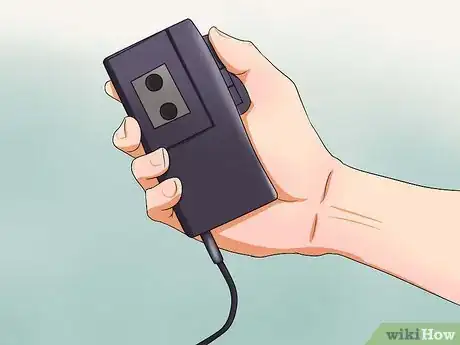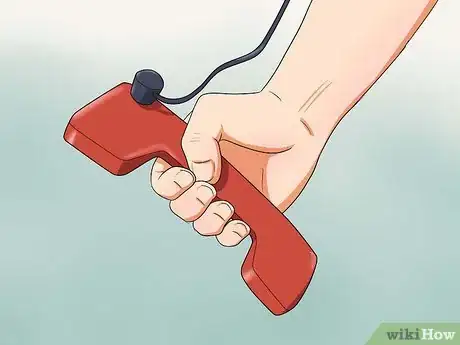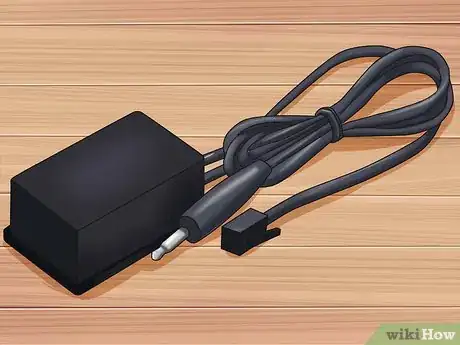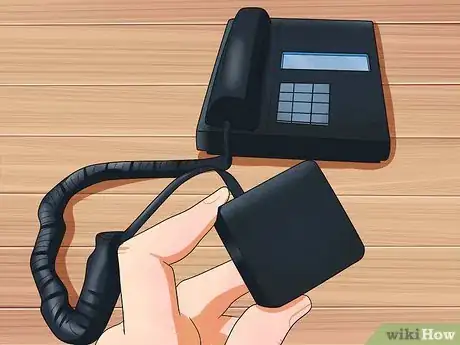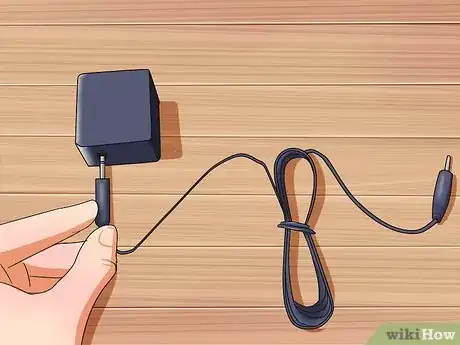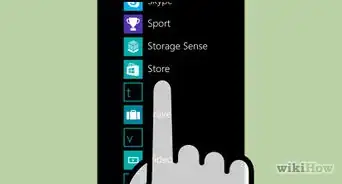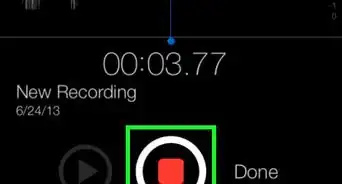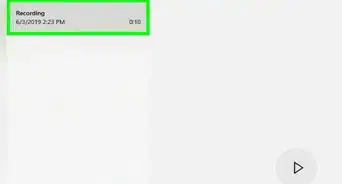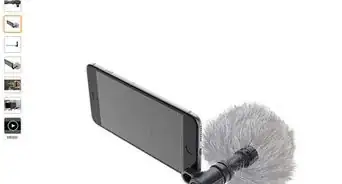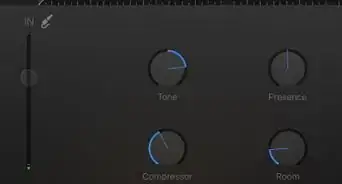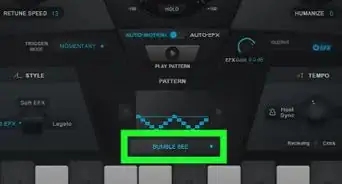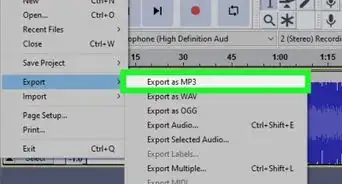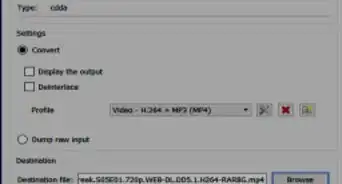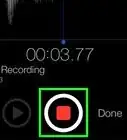X
wikiHow is a “wiki,” similar to Wikipedia, which means that many of our articles are co-written by multiple authors. To create this article, 23 people, some anonymous, worked to edit and improve it over time.
This article has been viewed 655,970 times.
Learn more...
In a legal tangle, it can sometimes be very useful to be able to prove that something was or wasn't said. Keeping a record of your phone conversations is a reliable way to keep proof on hand just in case you should ever need it. Read the steps below to learn how to record a phone conversation.
Steps
Method 1
Method 1 of 6:
Avoiding Legal Problems
-
1Be sure you're staying legal. The United States federal government places no restrictions on private citizens recording their phone conversations, but many states require consent from all involved parties. Without such consent, your records will be legally useless in those states, and could even get you in trouble.
- There are 11 states that require consent from all parties: California, Connecticut, Florida, Illinois, Maryland, Massachusetts, Montana, Nevada, New Hampshire, Pennsylvania and Washington. In addition, the state of Hawaii requires full consent any time a recording is made inside a private residence.
- If you're planning to tap a phone line instead, there are federal laws you must abide by in addition to state laws. Tapping a phone is the act of recording a conversation without the knowledge of either party. It is generally illegal except in certain law enforcement situations.
-
2Be aware of potential complications. Recording your phone calls can be very useful, but it can also have unexpected consequences. Arm yourself with knowledge and play it safe.
- You may get into a state jurisdiction snafu if you record a conversation without two-party consent, and it turns out that the other conversant lived in a state where two-party consent is mandatory. Even though you aren't breaking the law in this case, your phone records might be thrown out of evidence.
- Your friends and family may be upset with you if you begin to record all your calls and they find out. It's better to speak to those close to you before you start, and respect whatever boundaries they set with you.
- Depending on how above board your own calls are, there could be trouble if your records fall into somebody else's hands. Be sure you're living on the straight and narrow with regards to your love life, your finances, and any illicit activities you might be tempted to discuss over the phone.
Advertisement
Method 2
Method 2 of 6:
Record From a Land-Line Phone Using an Induction Coil Microphone
-
1Record with an induction coil microphone. These microphones are available at electronic and phone stores, and typically come mounted in suction cups to allow easy attachment to the handset.
-
2Attach a recording device. Plug the microphone's audio output jack into a computer, tape recorder, or other such device. A tape recorder or digital portable recorder has the advantage of being relatively small and portable, but a computer has advantages when it comes to cataloging and organizing your conversations.
- A good basic audio editing program for your computer is Audacity. Audacity is free, simple, and useful for things like clipping dead space off the ends of conversations. It can also export the conversation files in a variety of formats for easy storage. Audacity can be downloaded here.
-
3Place the microphone. Secure the microphone to the handset near the receiver (the end you speak into). Test the microphone by speaking into the receiver and playing back the audio record on your input device.
- If you're worried the microphone's suction cup won't hold, secure the microphone with tape to ensure that your recording won't be interrupted.
-
4Record your conversation. Turn on the induction coil microphone when you pick up the handset. Turn it off and stop recording when you're finished.
Advertisement
Method 3
Method 3 of 6:
Record From a Land-Line Phone Using an Inline Recording Device
-
1Capture your conversation with an inline recording device. Inline devices attach to your phone's cable and record your calls without requiring placement on the actual phone.
-
2Hook up the device. Plug your telephone line into the appropriate jack on your inline recorder, then plug the recorder's outgoing phone line into your wall jack as though it was a normal phone line.
- Find the recorder's audio output cable, and plug it into your audio recording device of choice. Some inline recorders come with a recording device integrated into the unit. If you'd prefer to save a step, buy one of these models. More basic models let you decide what type of audio recorder to use, which may make them more useful for some people.
-
3Activate the inline device. Do it just as the conversation begins, and don't forget to start recording if using a separate audio recorder.
- Some devices come with a “remote input” feature. These devices will begin to record automatically when there's a call, saving you the trouble.
Advertisement
Method 4
Method 4 of 6:
Record From a Cell Phone Using an In-Ear Microphone
-
1Use an in-ear microphone. These microphones are available at electronic and phone stores. Their great advantage over other physical methods is their small size and low profile.
-
2Wear the microphone. Install it into your receiving ear so that it will pick up the sounds from the speaker when you answer your phone.
-
3Plug in the microphone. Plug the audio jack of the microphone into a portable recording device.
- Pocket-sized digital and optical media recorders are widely available for purchase at electronics stores and online.
-
4Record your call. Switch your portable device's recording on as soon as you get a call. The microphone is always on and will send the sounds it picks up to your recording device.
Advertisement
Method 5
Method 5 of 6:
Record From a Cell Phone Using Software
-
1Use a software program to record your conversations. If you are using a smartphone, there are programs that let you record effortlessly whenever you have a phone conversation. Although not everyone with a cell phone is using a smartphone, this is by far the easiest option for those who can do it.
- Browse the app store for your phone's operating system. Search for call recorders. Most of them are free or very cheap.
- Double check what you're getting. Read over the developer's description for the app to be sure it's what you want. Most call recorders only work with certain phones or brands; some only work with the speakerphone on. Find one that suits you.
-
2Tap the “Install” or “Purchase” button to download and install the app. Make sure the app is properly working by doing a test phone-call with a friend.
-
3Follow the app's instructions to record your calls. If the app seems to work, but your recording quality is low, snoop around on the Internet for solutions. There are often workarounds for such things.
Advertisement
Method 6
Method 6 of 6:
Record Without Using Additional Hardware or Software
-
1Use cloud-based web applications. Several cloud based web portals facilitate recording of phone conversations without the additional hassle of installing any software or purchasing hardware.
-
2Most of such services utilize the 'Cloud-Bridge' technology. The service calls both the source and destination numbers, bridges them, and records the call. The service is tightly integrated into a telephony infrastructure which resides in the cloud. This allows providers to store recordings in the cloud and make them available to subscribers through personal portals.
-
3There are several providers. Some of such services are www.recordator.com, www.saveyourcall.com etc and a list of such services can be found at this Wikipedia article[1]
-
4They can be used with any type of phone(fixed line or cellphone). All your call recordings are made available by the providers in your personal dashboard and you can download them as well.
-
5All such web applications follow a subscription based model. At first, you need to create your personal profile on their website and purchase calling minutes according to their pricing plans. Average call + recording pricing varies from 10-25 cents per minute depending on which plan you choose.
-
6They do not inform your caller that the call is being recorded. You need to take care of the legal angle. So if your location requires two party consent, the onus in on you to inform your caller that the call is being recorded.
Advertisement
Community Q&A
-
QuestionHow do I record a face-to-face conversation on my iPhone 7 Plus?
 Community AnswerIf you have a jailbroken device there are many tweaks on Cydia that can help you do that. If not you can use Airplayer with your PC and record it from there.
Community AnswerIf you have a jailbroken device there are many tweaks on Cydia that can help you do that. If not you can use Airplayer with your PC and record it from there. -
QuestionCan I easily record a telephone conversation that I'm having with my iPhone 6s?
 Community AnswerYes. Simply follow the steps.
Community AnswerYes. Simply follow the steps. -
QuestionCan incoming calls be recorded on iPhones?
 Community AnswerYes, using a special device that plugs into your headphone jack. Be aware, as recording without the other's consent may be illegal in your area.
Community AnswerYes, using a special device that plugs into your headphone jack. Be aware, as recording without the other's consent may be illegal in your area.
Advertisement
Warnings
- Follow the consent rules for your state. If you live in a state that requires consent from all parties before recording a conversation, be sure you have it before you start. For extra protection, once you're recording, ask the other party to repeat their consent so you'll have it on record.⧼thumbs_response⧽
- As previously mentioned, it's typically illegal to perform a wiretap (listen in on the conversations of others without their consent). Law enforcement efforts can include wiretapping, but even then there are steps that must be taken to prove that the tap will be useful and necessary. Only record your own conversations, or conversations you've been given permission to record.⧼thumbs_response⧽
- It's illegal to purchase a radio scanner device that can intercept cell phone conversations. The FCC does not allow such scanning devices to be manufactured in the United States or imported from elsewhere. Use the other methods described above to record your cell phone conversations instead.⧼thumbs_response⧽
Advertisement
References
About This Article
Advertisement



